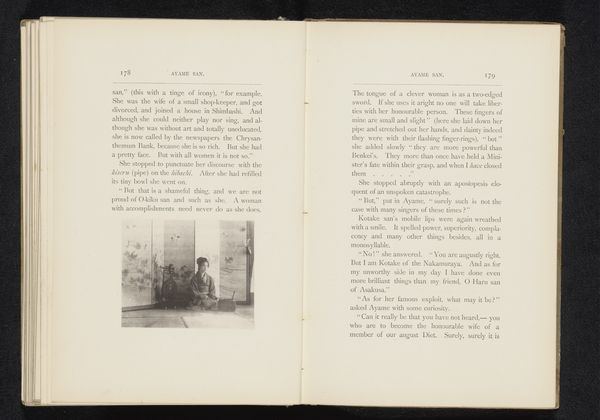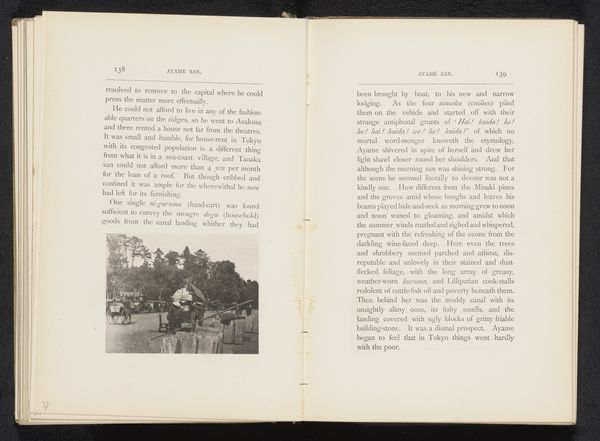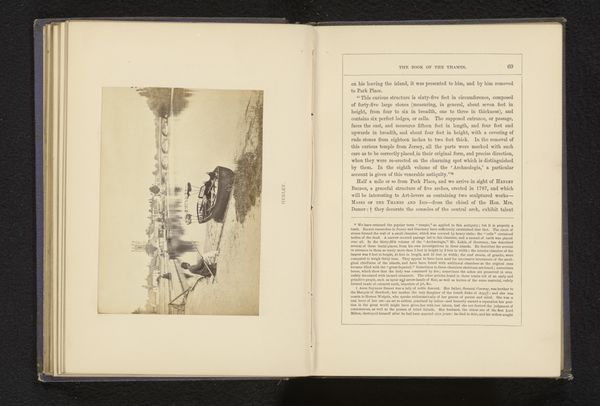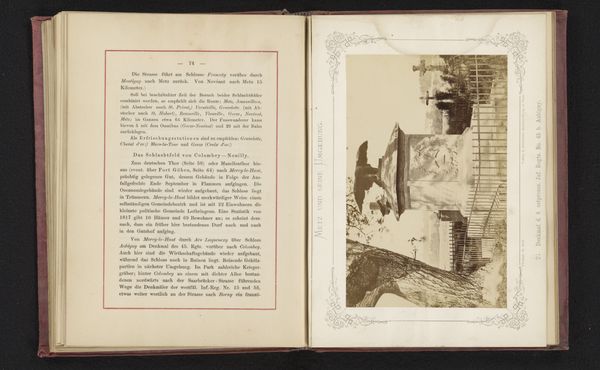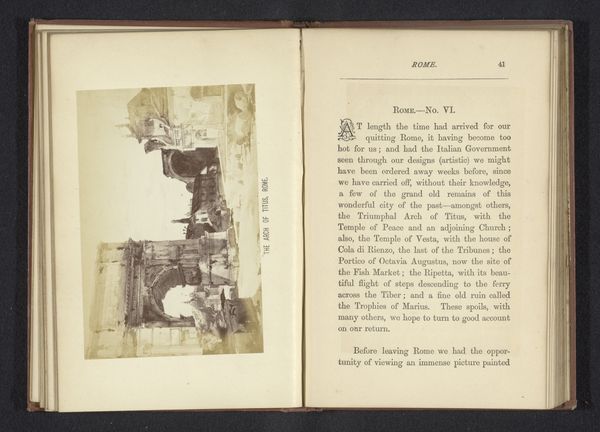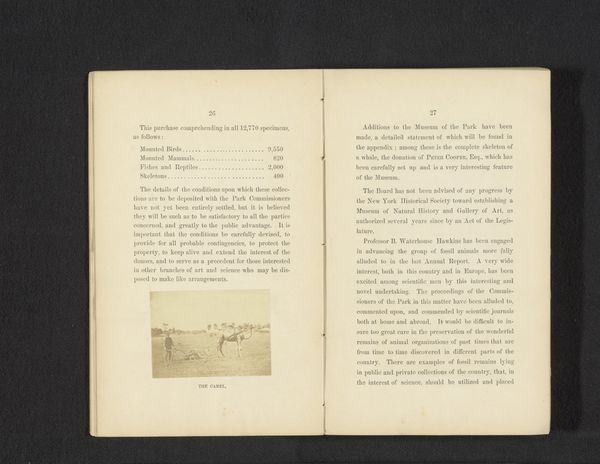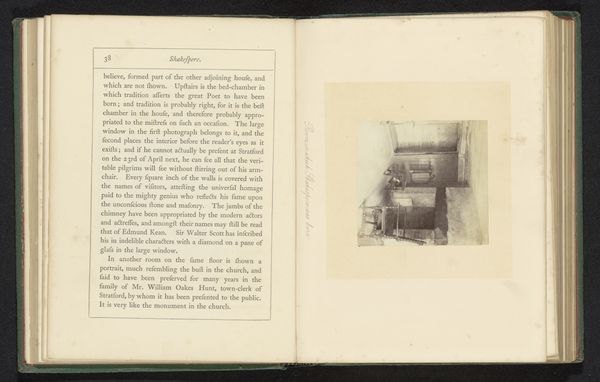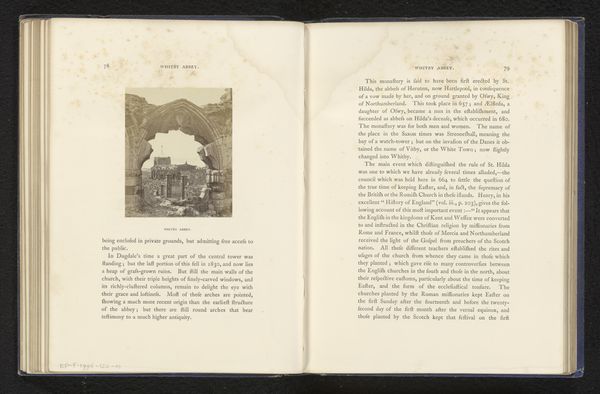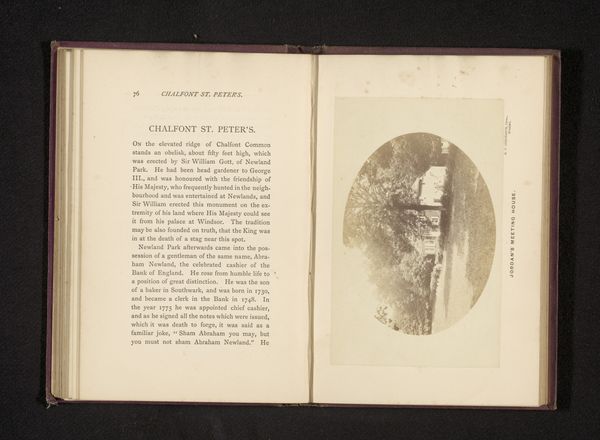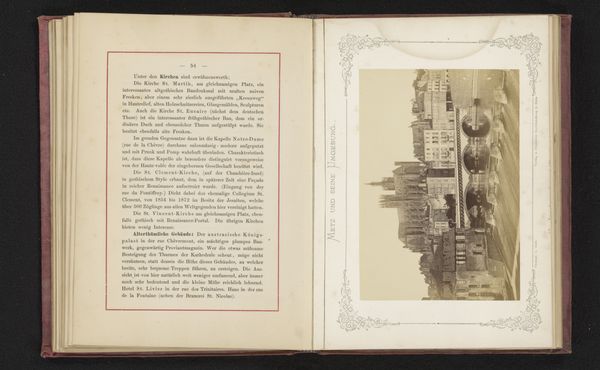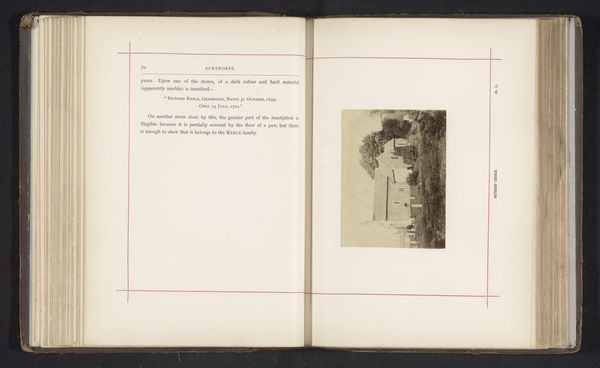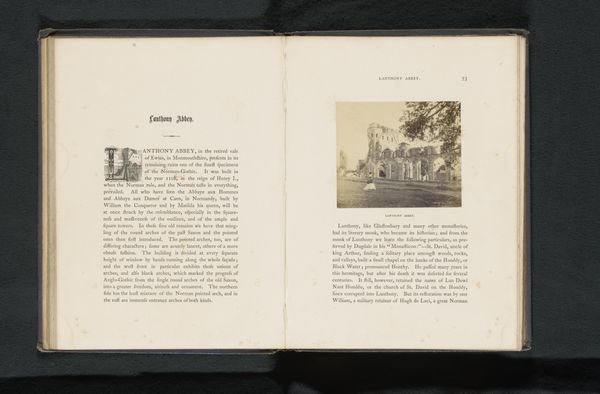
print, photography, albumen-print
#
medieval
# print
#
landscape
#
house
#
photography
#
albumen-print
Dimensions: height 82 mm, width 85 mm
Copyright: Rijks Museum: Open Domain
Curator: Here we see "Gezicht op Lindisfarne Castle," an albumen print that dates to before 1864, credited to Stephen Thompson. What are your initial impressions? Editor: It's stark. The monochromatic tones, the weathered stones of the castle…it feels quite bleak, almost mournful, and gives a haunting feel. Curator: The choice of albumen print is telling. Albumen, made with egg whites, offers a unique sheen, creating a luminosity within the grays, thus suggesting a grandeur through material extravagance while simultaneously recording a somber subject. We can't ignore that albumen was popular at the precise time that photography became entangled in issues of mass culture and early commodity production. Editor: Yes, that industrial undercurrent can't be overlooked! The landscape style feels almost intentionally desolate. Lindisfarne, or Holy Island, had a prominent religious history that was rapidly declining at the moment this print was circulated to larger audiences; a former monastery used as an English naval base is certainly fraught subject matter for many! Curator: Absolutely, we must also acknowledge how these landscape depictions fit within larger projects of colonial administration and nation building. Photography here serves not only as aesthetic pleasure, but becomes crucial in constructing and circulating certain narratives about territory, power, and the social life within these spaces. This location held incredible value because of resource distribution within the North Sea trade routes. Editor: And I think the very act of photographing ruins, especially those linked to powerful, sometimes contested religious identities, frames it all with commentary on what’s been lost—or taken. Perhaps the photograph itself functions as an act of reclamation. It’s about power structures as much as it is about pictorial beauty. Curator: Precisely, framing Lindisfarne’s history as decline invites contemplation about production: How the island's resources—spiritual, material, social—have been extracted and represented. This challenges conventional art history's elevation of artistic genius. Editor: Thinking about it that way reframes this print. Beyond aesthetics, it becomes an act of cultural witnessing. It provokes deeper conversations about land rights, displacement, and our relationship to the built environment.
Comments
No comments
Be the first to comment and join the conversation on the ultimate creative platform.
